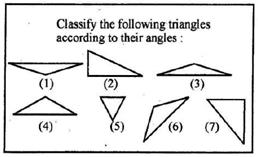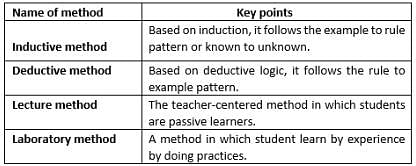Practice Test: Mathematics Pedagogy - 4 - CTET & State TET MCQ
30 Questions MCQ Test Mathematics & Pedagogy Paper 2 for CTET & TET Exams - Practice Test: Mathematics Pedagogy - 4
When faced with word problems, Rajan usually asks “Should I add or subtract.” “Should I multiply or divide?”
Major aspect of inquiry based lesson plan is
| 1 Crore+ students have signed up on EduRev. Have you? Download the App |
From the unit of ‘fraction’ teacher asked the students to list any five fractions. This question refers to
Teacher gave following sorting activity in class :
This sorting activity is

Which of the following activities is meant to enhance the problem-solving abilities of students of Class III?
Mr. Sharma was assessing the students' work on exponents. One of the response sheet was as follows:
(a) 23 x 25 = 28
(b) 32 x 42 = (12)4|
(c) 33 ÷ 35 = 3–2
(d) 720 ÷ 714 = 76
(e) 93 ÷ 186 = 
On the basis of this response sheet Mr. Sharma can make the following observations :
As an upper primary school mathematics teacher you believe that
Which of the following is the organization of Remedial teaching in Mathematics?
Which is problem-centred and democratic technique –
Directions: Answer the following questions by selecting the correct/most appropriate options.
Which of the following statements is not true about ‘mapping’ in mathematics?
Birkhoff’s measure of aesthetic sense or beauty provided by the formula:
Directions: Answer the following questions by selecting the most appropriate option.
Which method is the reverse of the analytic method?
Pythagoras theorem can be best explained by which method?
What should be the sequential order of steps of remedial teaching below?
I. Analysis of pupils
II. Choosing strategies
III. Teaching objective
iV. Adopting curriculum
V. Evaluation
|
75 videos|228 docs|70 tests
|
|
75 videos|228 docs|70 tests
|




















